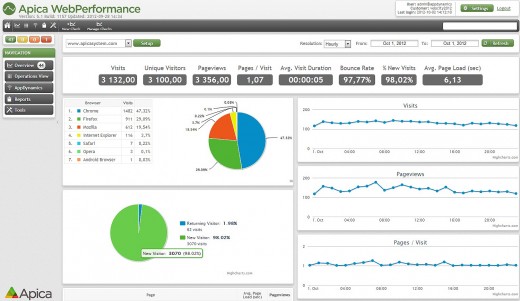
Apica, the load testing and performance monitoring provider for cloud and mobile applications has enhanced its WebPerformance portal to include integration with AppDynamics and Google Analytics.
Apica WebPerformance monitors the delivery of Web content and application functionality to real browsers in terms of audience actions. Customers get a controlled perspective on actual application and content delivery with analytics to provide insight into possible improvement and troubleshooting.
The latest enhancement to Apica’s WebPerformance portal include Websockets/HTML5 and SPDY standards support for monitoring rich media and real-time status indicators.
Apica WebPerformance now supports browser checks from Google Chrome, in addition to Internet Explorer and Firefox. This provides a true end-user view of performance from the most popular browsers.

With the company’s API access, developers can embed monitoring results and performance check summaries into native programs using real-time data from Apica’s global network of monitoring agents and users can also record scripts on their own and immediately begin reviewing and analyzing the performance of their website with a self-service function.
The whole Apica WebPerformance portal now supports HTML5, which means that it can be accessed from laptops, smartphones or tablets.
Sven Hammar, CEO of Apica is naturally pleased with the updates and feels that the more of us there are online, the higher the pressure is for sites to cope with more traffic. He says:
“Consumer demand for high-performing websites and applications is constantly increasing. Fast response times are no longer a luxury, they are expected.
Performance testing as part of the development process, not just after launch but prior to launch as well, is necessary to avoid problems that can cost businesses time, money, and poor brand reputation.
We’ve enhanced our WebPerformance solution with more standards support and integration so users can correlate data from multiple instances and locations across the globe to get a transparent look at application performance and improve the end-user experience.”
Image Credit: Brionv
Get the TNW newsletter
Get the most important tech news in your inbox each week.




